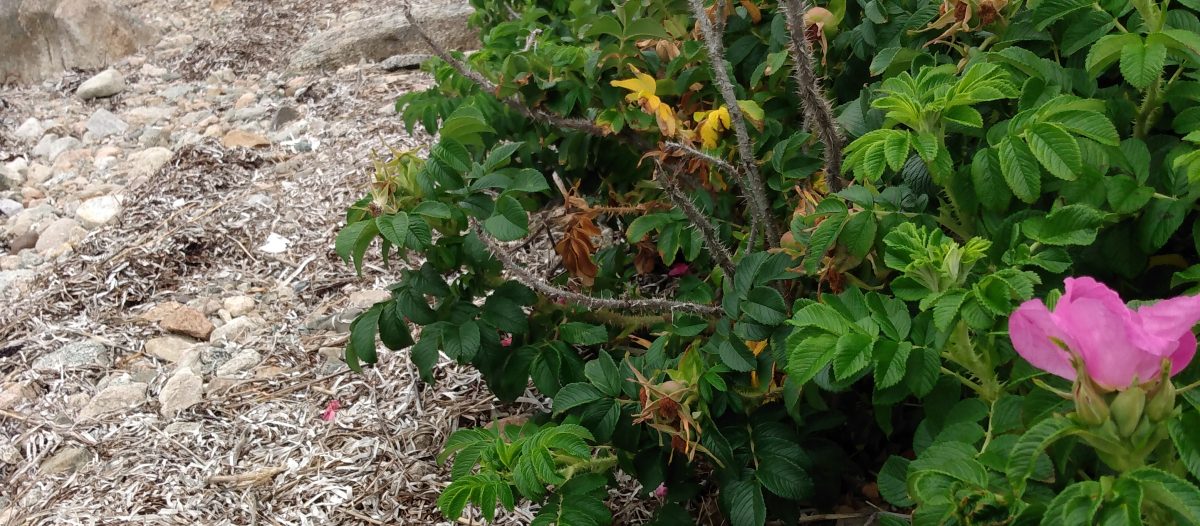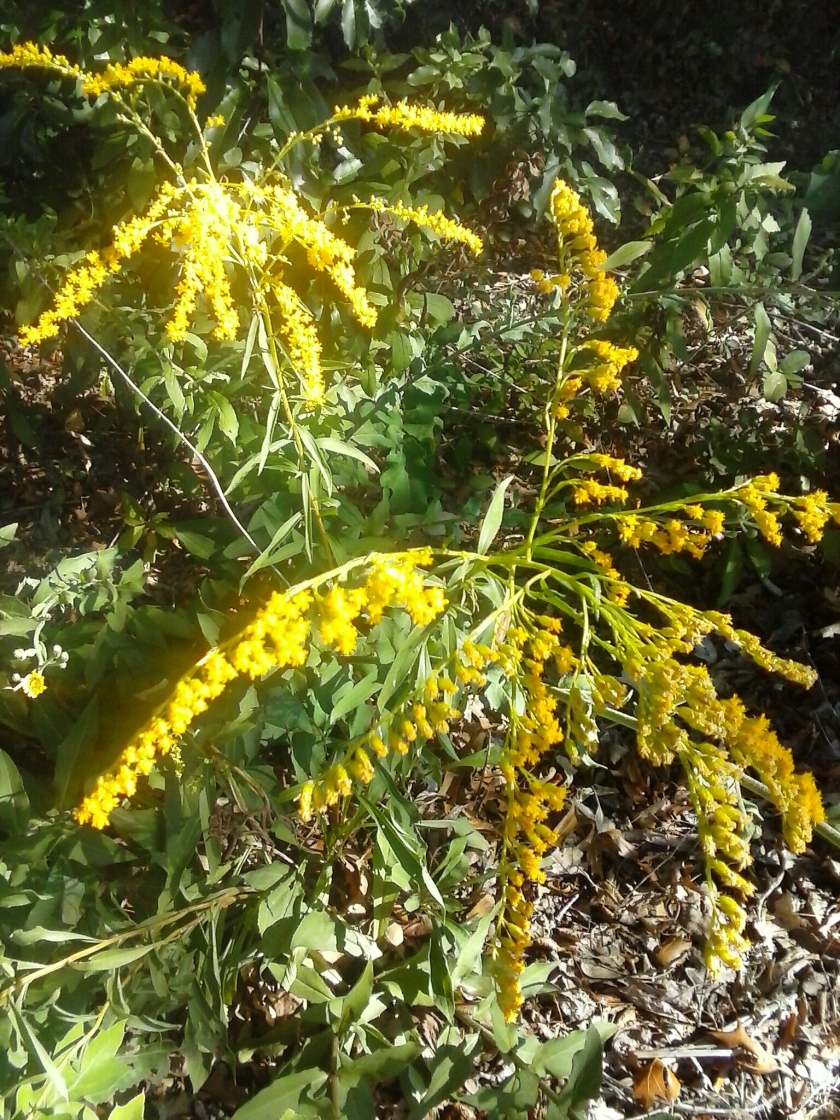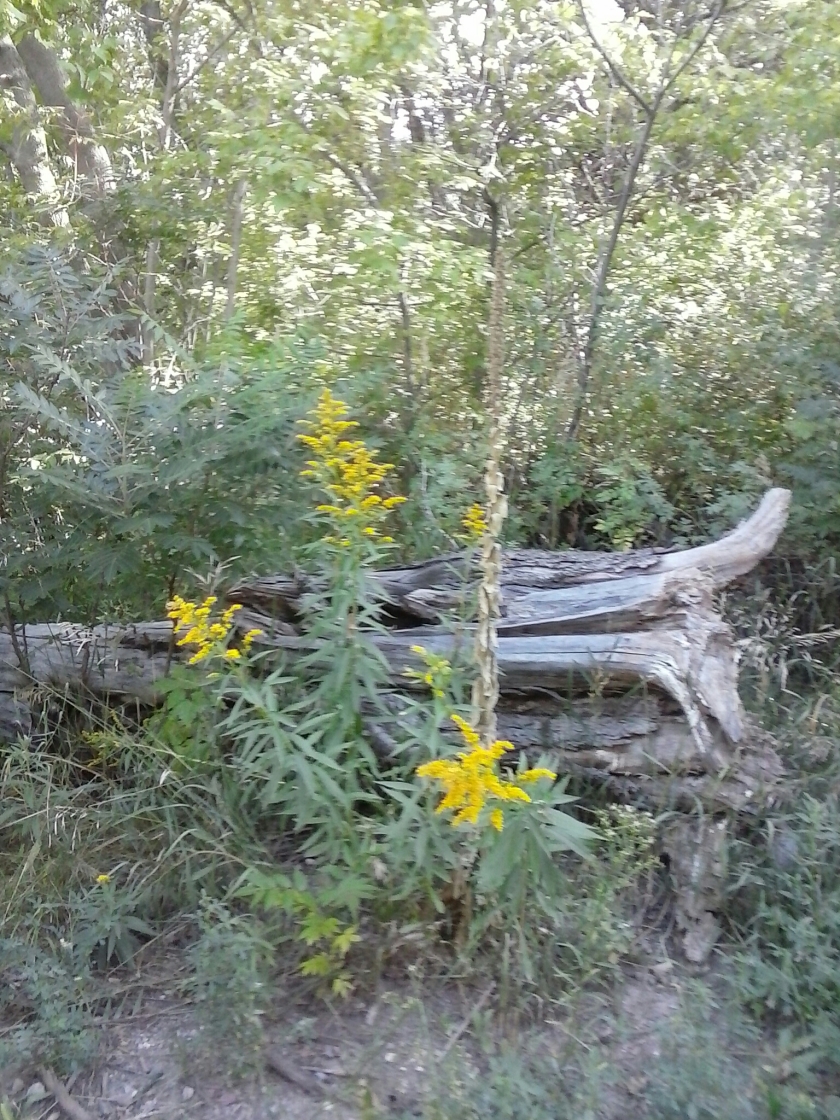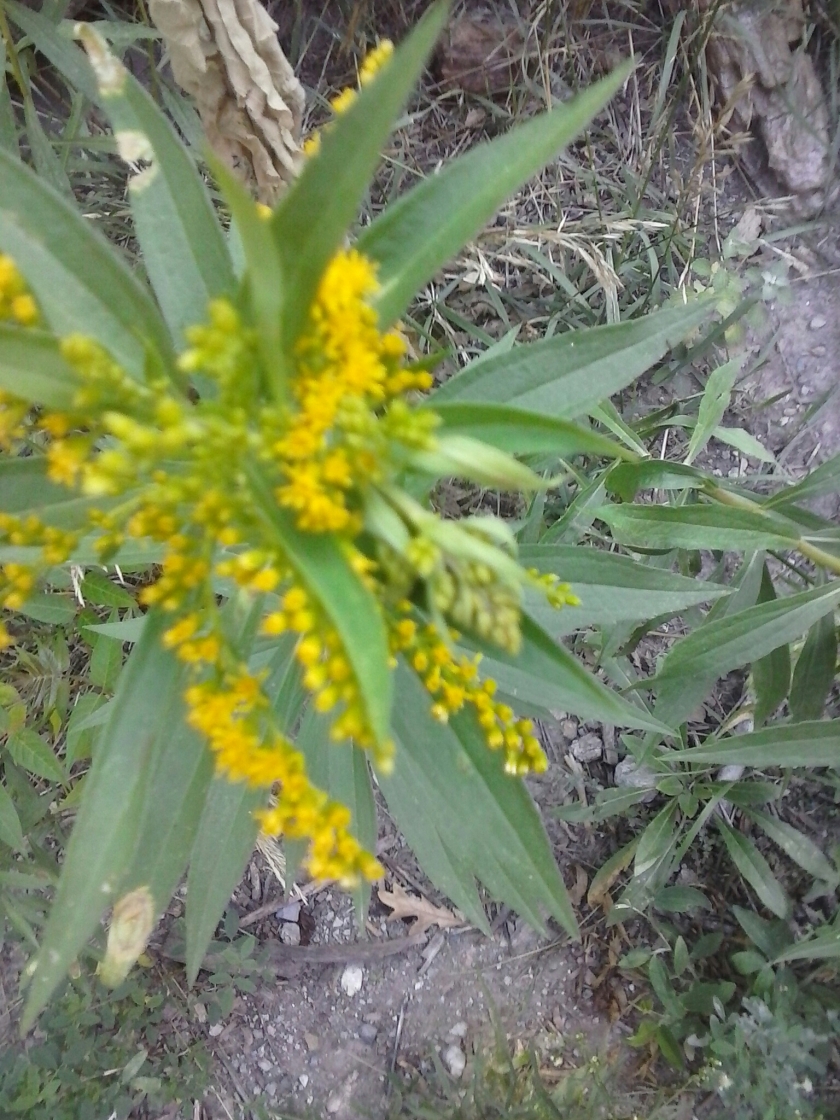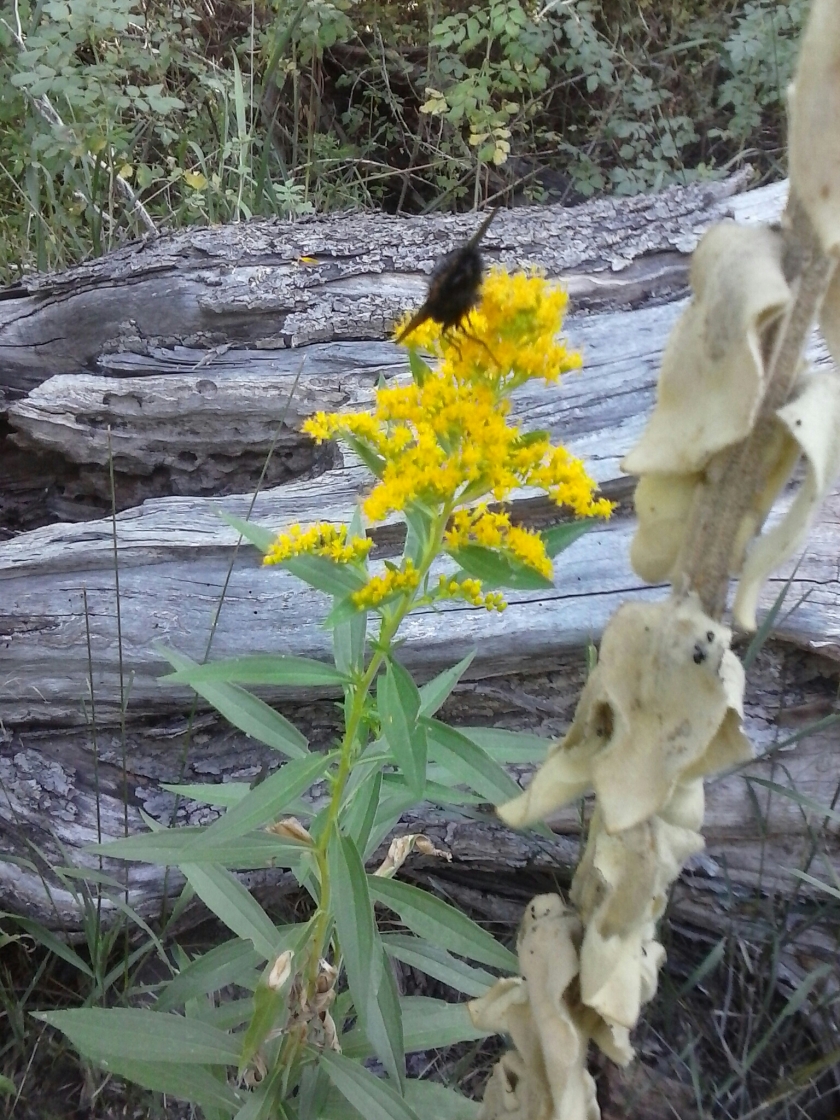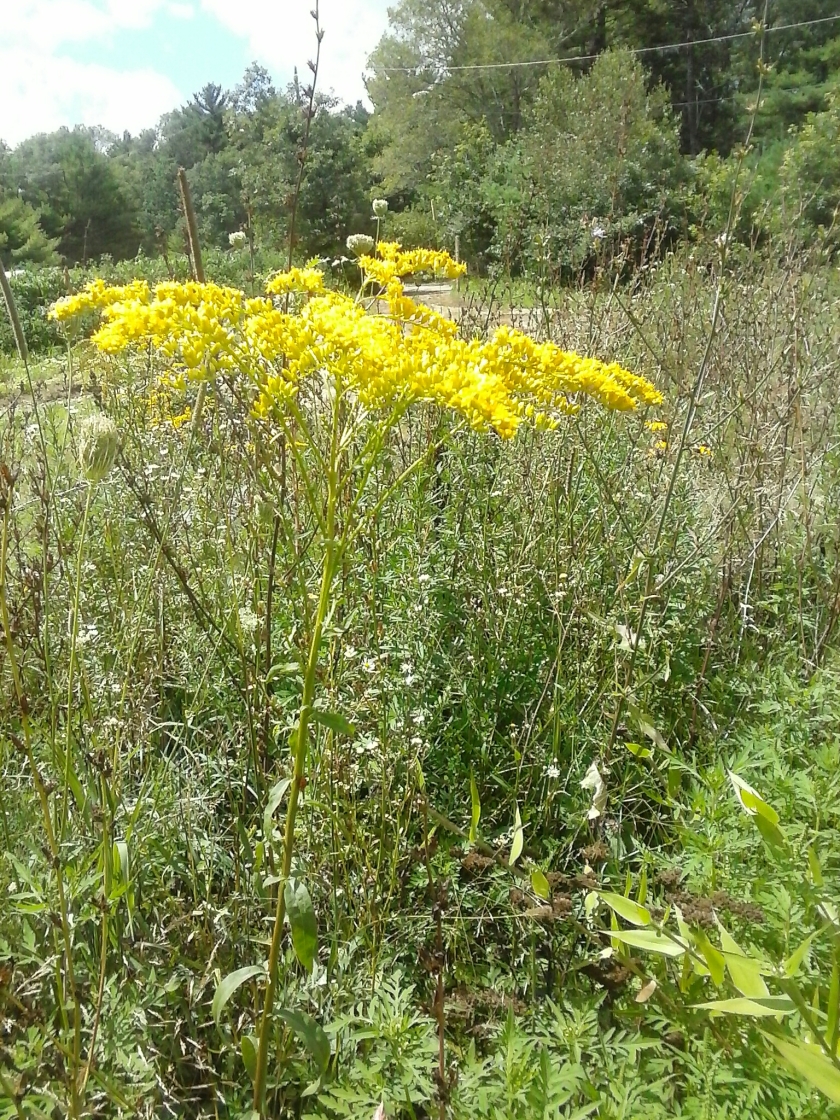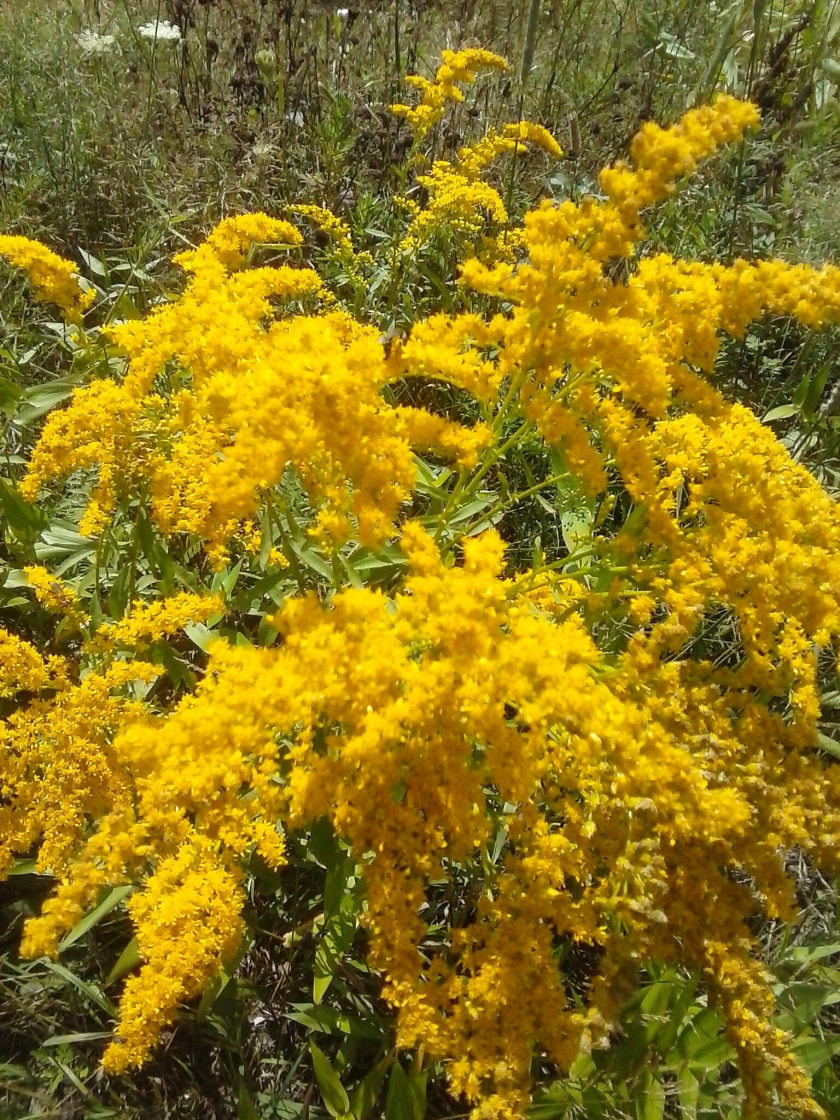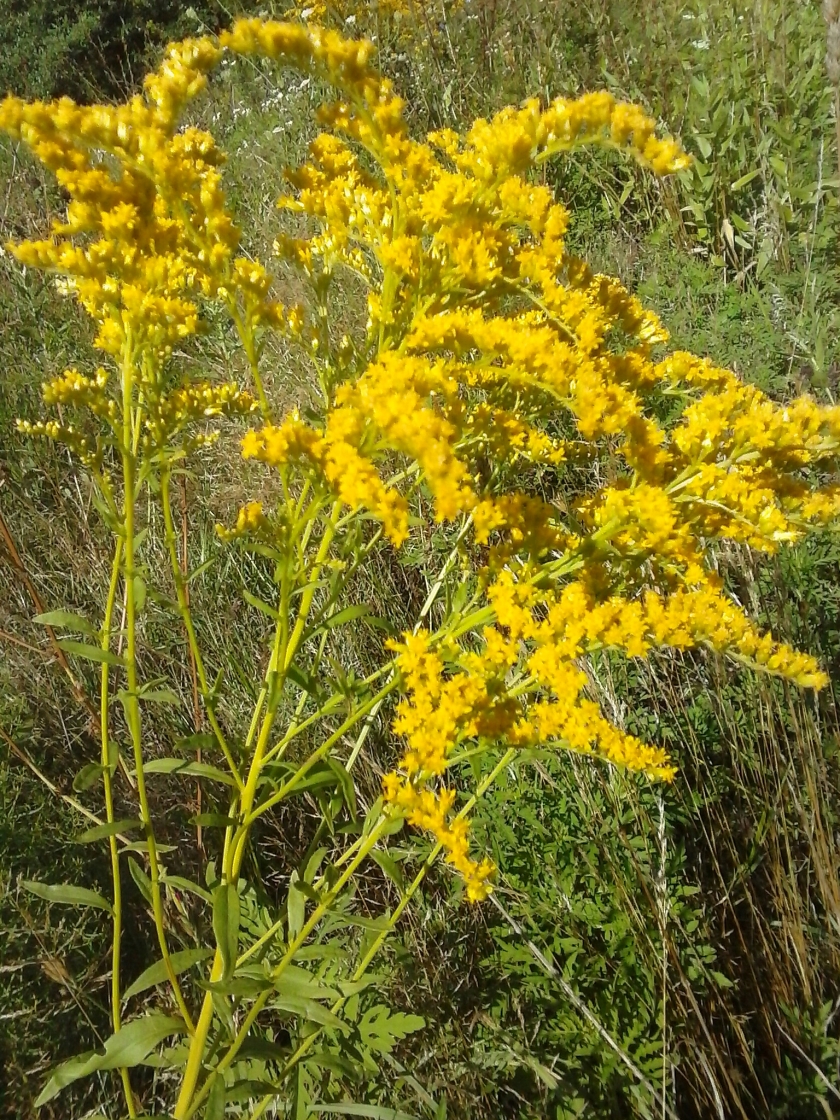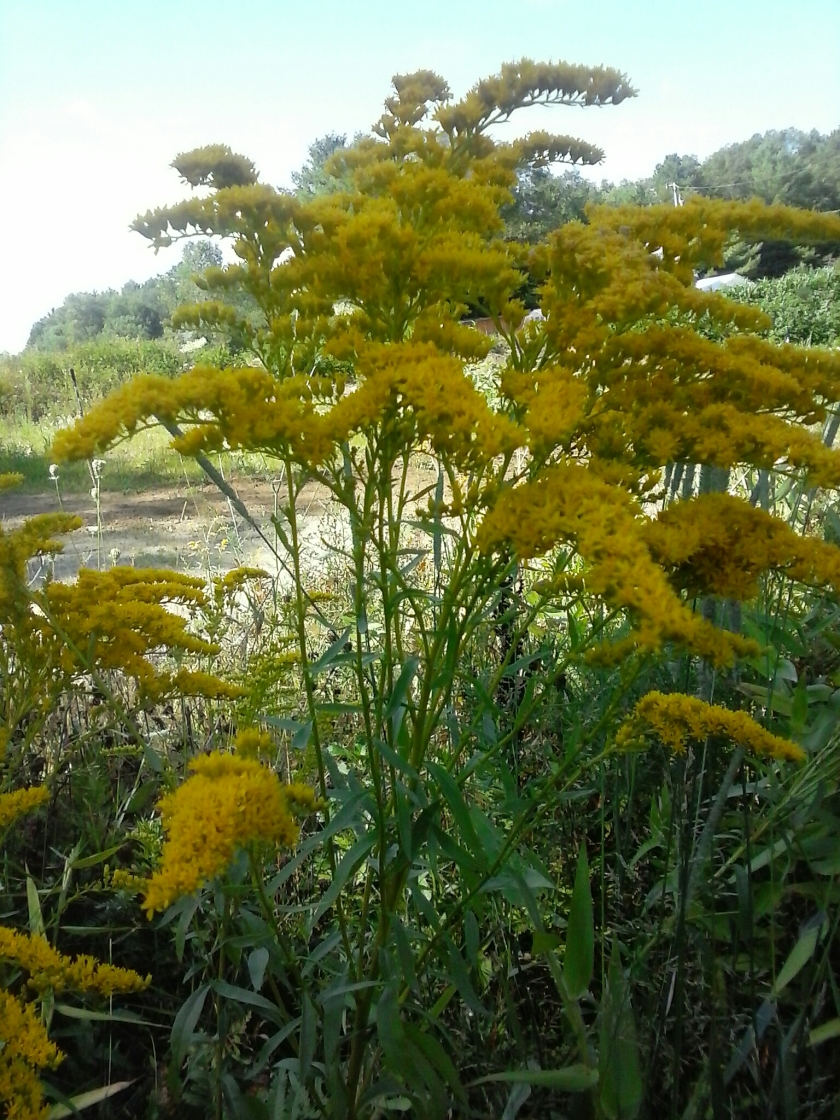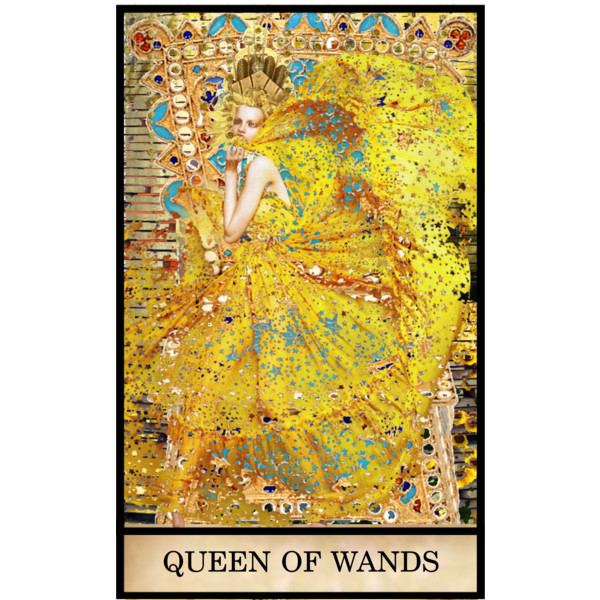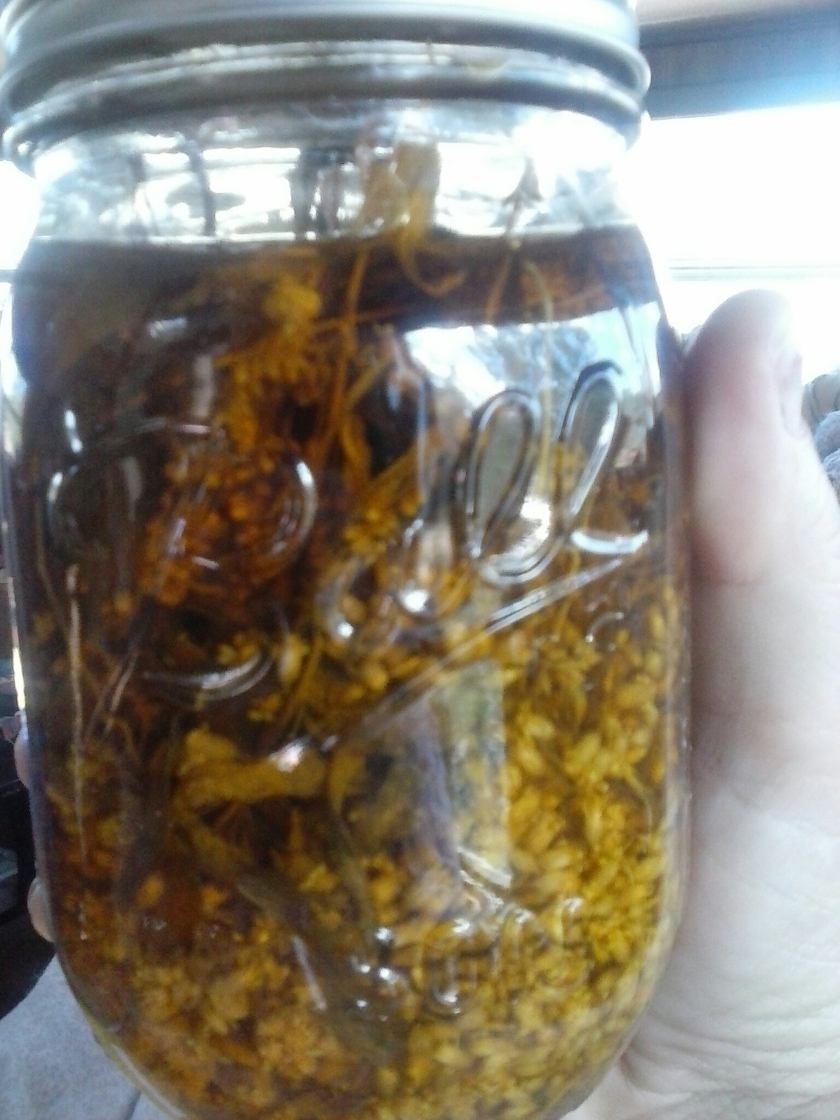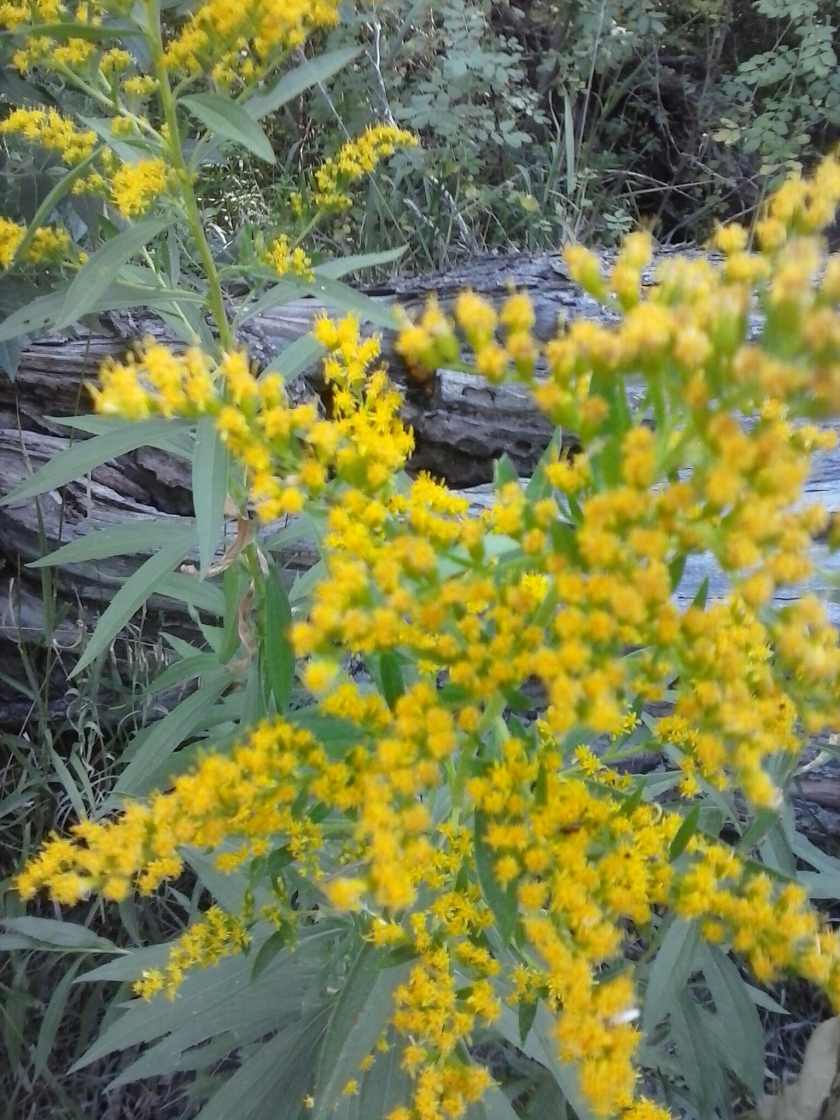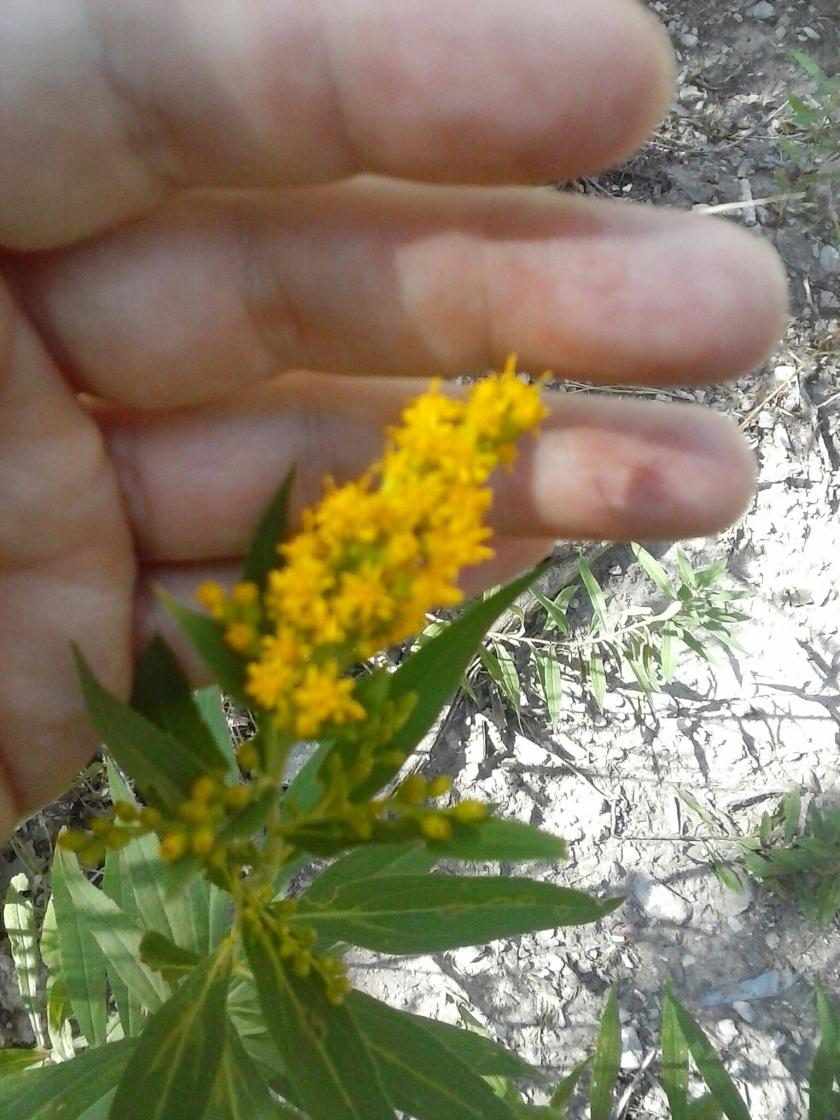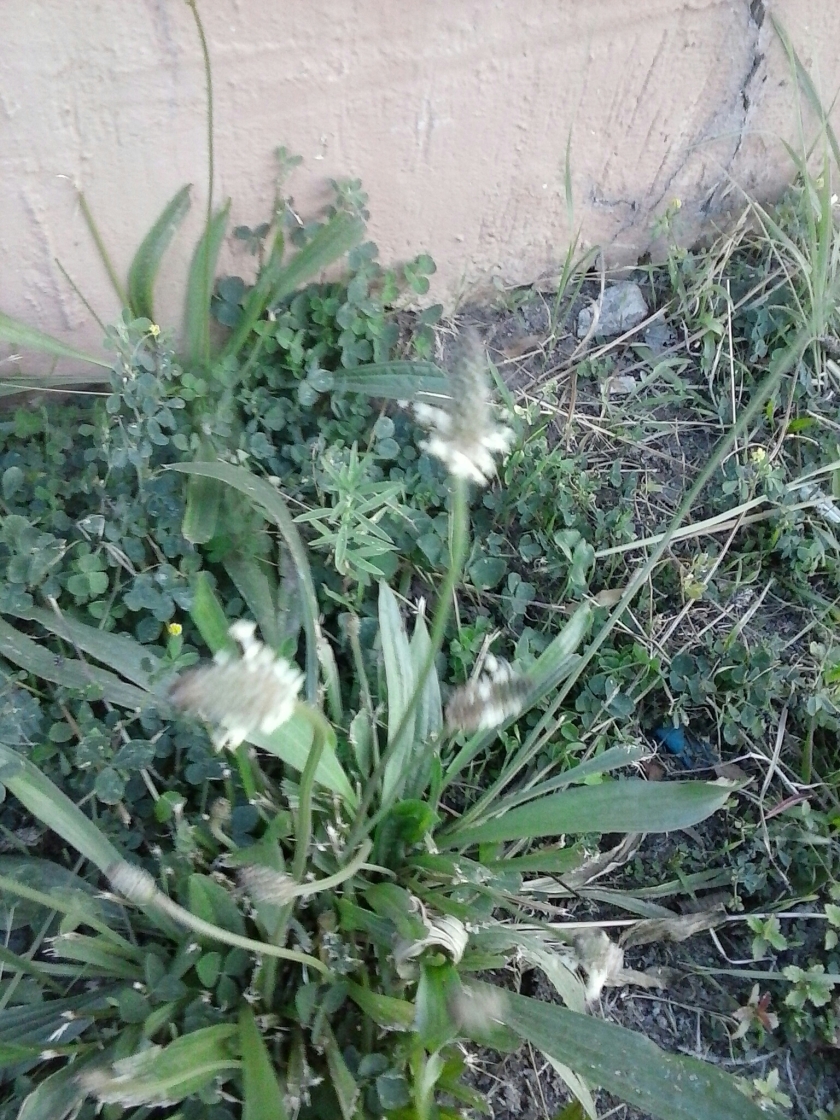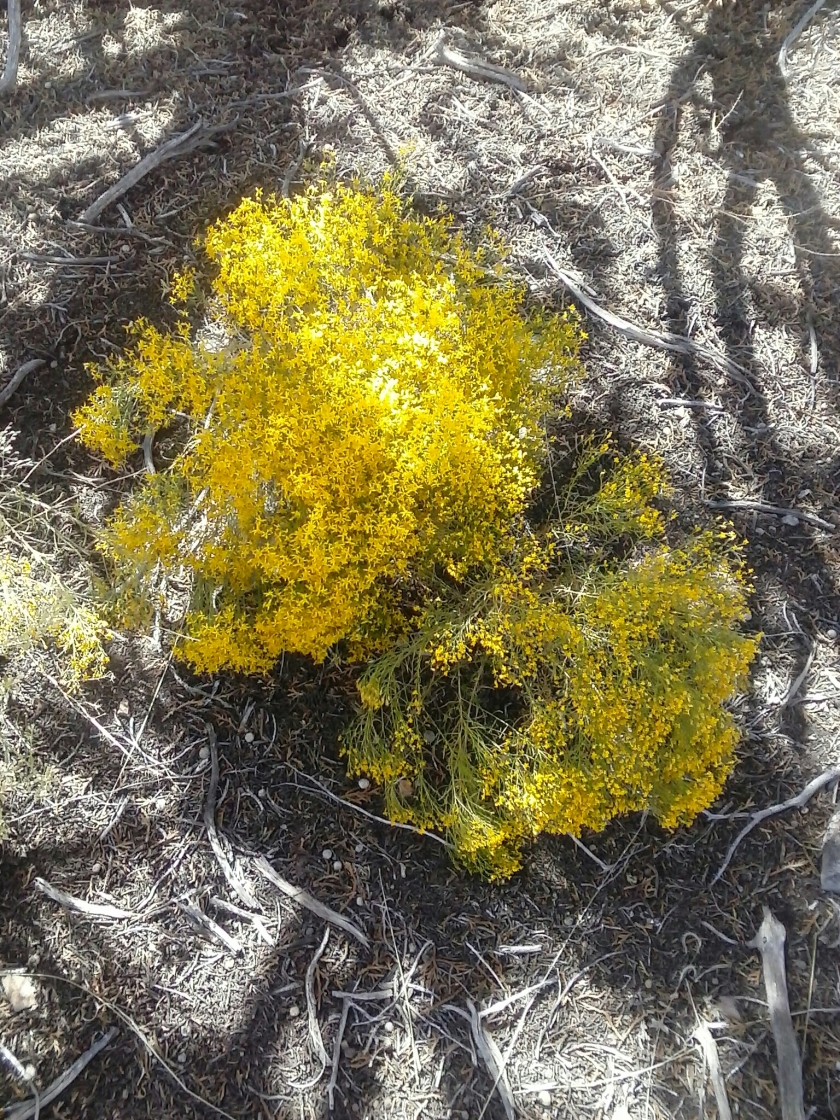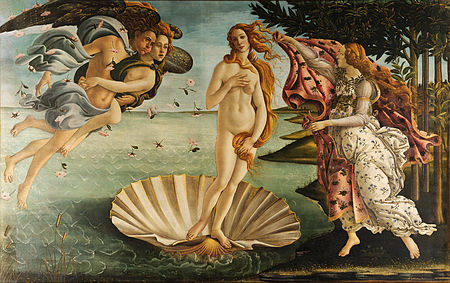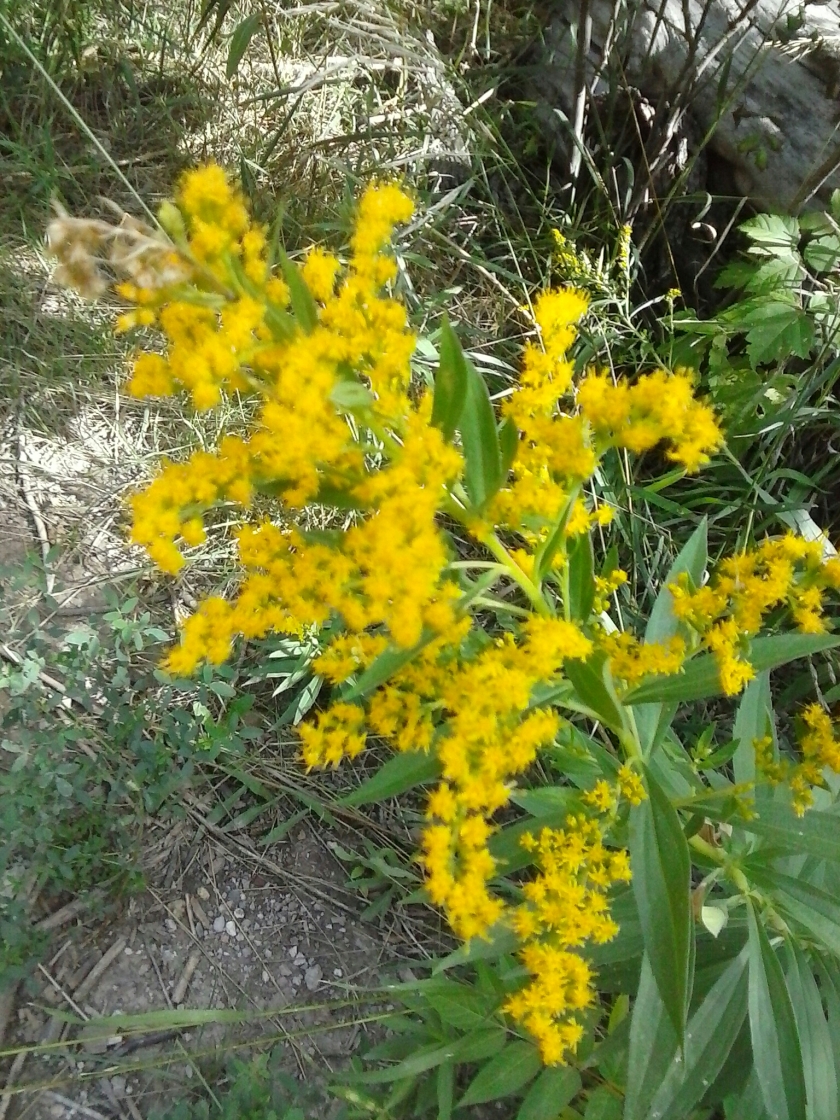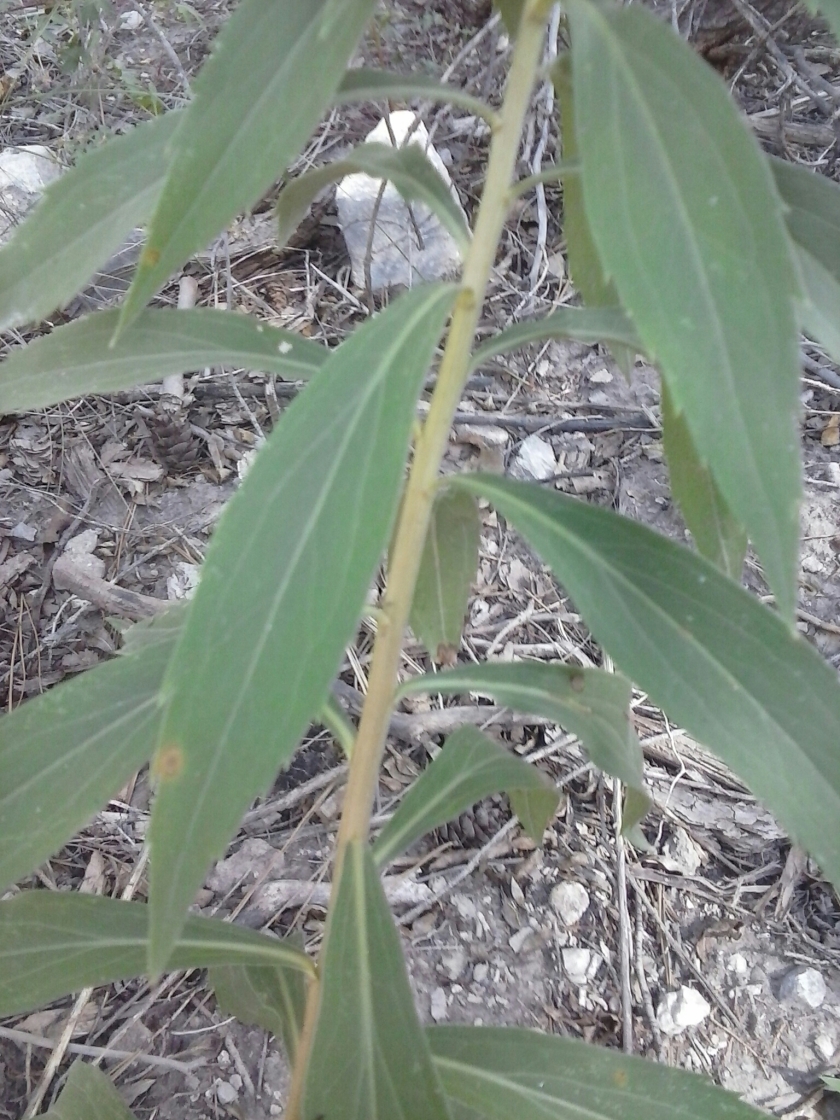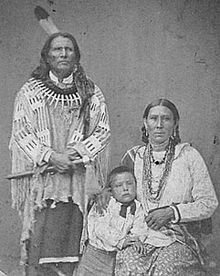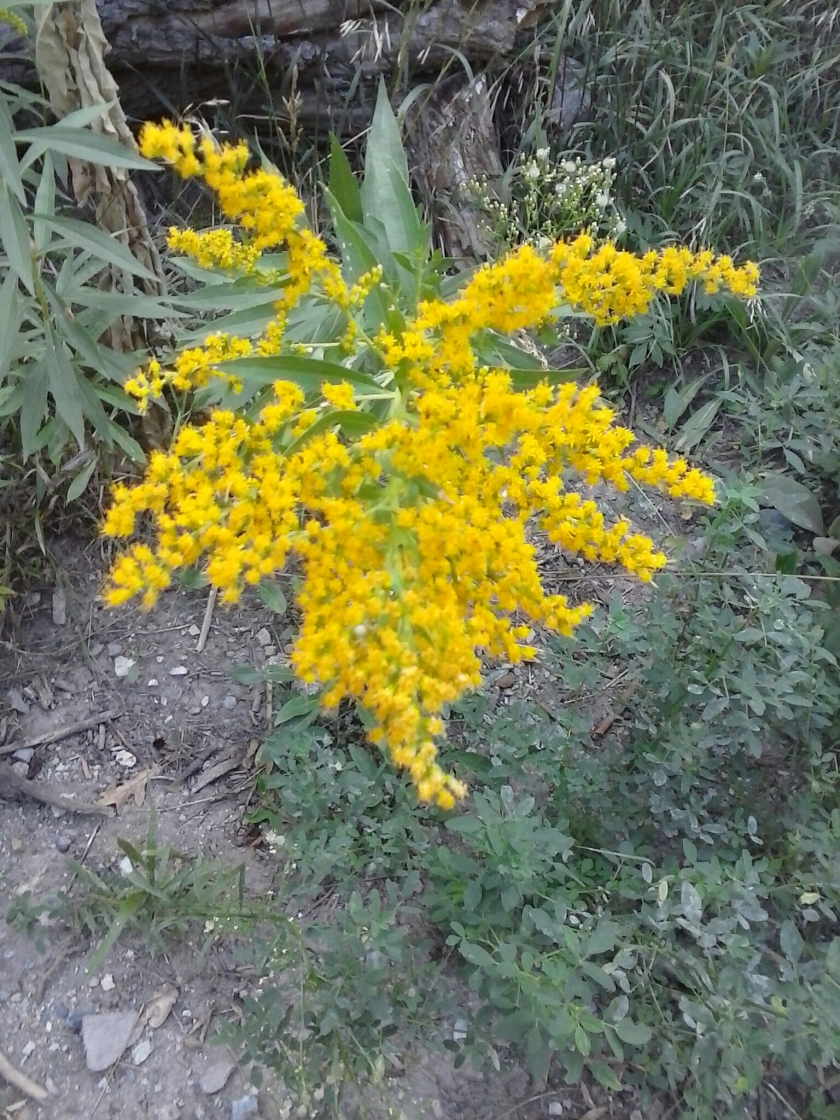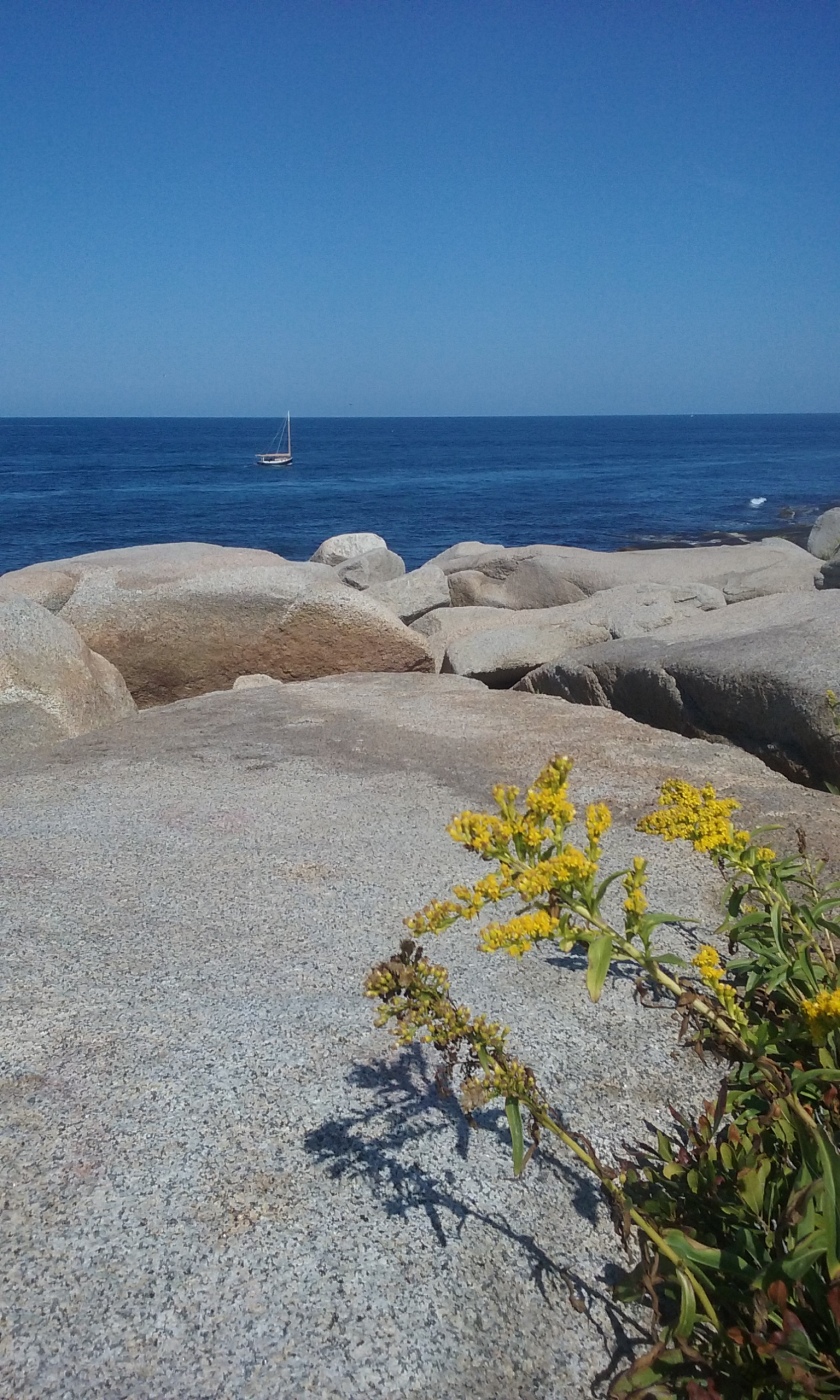Goldenrod flower buds and blooms
Solidago spp.
Family: Asteraceae
Habitat: Roadsides, meadows, disturbed areas, also in mountains
40-60 species alone, grow in North America.
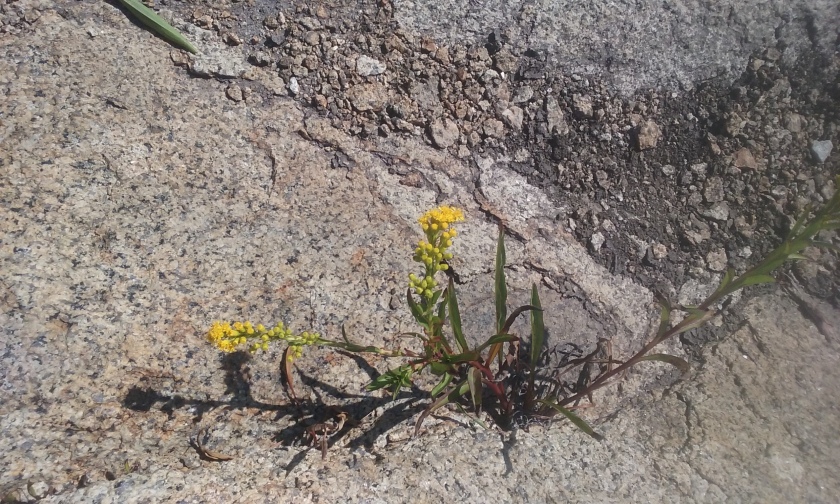
I always appreciated the sunny spread of blooms, especially in the meadows behind my grandparent’s house.
I grew up, as many of us did, hearing that Goldenrod caused hayfever. This is a myth as it has sticky pollen, pollinated by insects…and not airborne by the wind.
Ironically it helps reduce allergic response and can be used as a remedy for seasonal allergies.
Goldenrod growing in the Sandia mountains of New Mexico.
And, the Goldenrod that I found growing in New England.
The golden rod with its fiery, golden blooms
radiant
cheering
healing
vibrant
and vital
Reminds me of the suit of wands in the tarot deck.
And, I adore this image!
She is Goldenrod incarnate!
Can be purchased at Polyvore.com
Artist: Cabaret Voltaire
golden wands of fiery, passionate light. The New Mexico mountain blooms shown in this post, smell infused of honey. One species, Solidago odora, (not shown) the leaves and flowers smell like anise.
Here is the goldenrod infused oil, that I made in New England. It started out on my parents front doorstep. Infusing away, during sunny days. Then before my flight home, infusing amidst jars of tinctures I made…in a box…along its sundry postal trip… to the rural post office 8 miles from where I live. Gleefully, I pick up my herbal remedy delivery, that I collected and made myself…
Not finished solar infusing yet…, onto the bumper of the camper, we call home.
There, on the sunny bumper ledge, infusing by sunny day, starlight and …moon phases…herbal oil infusion journeys with radiances of summer heat and light in North central New Mexico.
Goldenrod oil can help heal wounds, especially those that need a cooling and stimulating action to heal. I like to make salves out of my herbal oils.
Goldenrod mixed with plantain makes a good remedy for stings and skin irritations.
newer growth with flower rays
and narrow leaved plantain, a little beat up from lawnmowers next to a highway… but narrow leaved plantain, nonetheless!
Also, Goldenrod has a longstanding and effective use in relieving sore and achey muscles.
So does nearby growing Snakeweed, also in the Asteraceae family.
Snakeweed below, I’ve talked about it before… an age old respected remedio, for arthrits and achiness, here in New Mexico.
Dry wilt your fresh herbs for, at least, a day before infusing oil.
Double boil slowly to infuse the goodness of all the goldenrod properties…
Or try, as many of you already do, solar infusing.
My first experience along with making carrot seed oil.
Quite a pleasure to infuse oils by the sun, lunar and starry skies.
……………………………………………………
Edible Uses:
Goldenrod blossoms make excellent fritters. Similar to Elderberry blossom fritters.
The tender leaves can be cooked as a green.
You can use the Solidago odora, with licorice/anise scented leaves to make an herbal tea jelly.
This type of Goldenrod has translucent dots on its leaves when held to the sun. This imparts the leaves with the anise flavor.
When Colonists dumped British tea in the harbor, this delicious spice tea was an ingredient in what became known as Liberty tea.
Make your own Liberty Tea Blend and define liberty as it relates to you!
Use equal parts of Sweet Goldenrod (anise flavored species described)
Betony, Red Clover, and New Jersey tea…(also known as Red Root) species name: Ceanothus americanus.
New Jersey tea tastes a great deal like green tea.
Can’t wait to mix up a blend of this health giving, tasty tea!
Long before liberty tea, Native Americans used the Solidago odora, as a medicinal and as a flavoring in medicinals.
This oil, extracted from the leaves and flowers, has also been used in perfumery.
This is giving me good ideas for making hydrosols. You can make your own simple still for hydrosol making. See the Herbal Medicine Maker’s Handbook. by James Green
Habitat: Solidago odora grows in open sandy soil throughout the eastern U.S and midwest, south and through southeast Texas.
Other varieties of Goldenrod can be used to make a jelly too.
Here is a recipe:
(2 Cups fresh plant and 4 Cups water. Boil water, take off heat and add herb, steep for 10-30 minutes.)
If using dried goldenrod use half amount of herb.
Take just 1 Cup of the Goldenrod tea
add 2 Tablespoons pectin.
Heat tea and pectin and bring to a roiling boil.
Add 3/4 Cup sugar all at once.
Stir and boil 1-3 minutes until it passes the jelly test.
Pour into jelly jars.
If using species other than the Solidago odora, consider adding a 1/2 tsp of anise or other flavoring… or just as is.
The rest of the tea can be used as an iced or hot tea. Maybe with some lemon and sweetener to make an herbal lemonade! Customize your own yummy drink blend 🙂
………………………………………………………
Goldenrod has a long history of use around the world as an Herbal Medicine!
Nicholas Culpeper, a 17th century, English herbalist, describes in his book that Goldenrod is ruled by the planet Venus. Here depicted is the birth of Venus by Sandro Botticelli, 1486., one of my favorite paintings.
According to Culpeper, Solidago fragrans, “It is a balsamic vulnerary (wound/skin healing herb, also for)…hurts and bruises…a safe diuretic; few things exceed it in the gravel, stone in the reins and kidneys (and kidney stones with pain and soreness… also with) bloody or purulent urine; then its balsamic healing virtues co-operate with its diuretic quality, and the parts at the same time are cleansed and healed.”
Also, he states that it is an excellent wound healer, inside and out.
Also, it helps to “stay the immoderate flux of womens’ courses, ruptures, ulcers in the mouth or throat…” and in preparations as a wash for venereal disease.
A tea of young leaves, fresh or dry, he recommends for these healing purposes.
Also, he states that Solidago angustifolia, as a decoction and rinse, helps set loose teeth.
More cited herbal uses:
According to the excellent website by Plants for a Future., the common species,Solidago canadensis, is excellent for kidney problems, allergies due to its quercetin constituents, its root can make an effective poultice for burns, flowers and buds chewed and swallowed soothe sore throats, saponins of the plant are specifically anti-fungal against candida overgrowth, and more uses described in link above.
Specifically, it is described as being:
antiseptic, hemostatic, febrifuge, kidney remedy, styptic and useful salve.
Matthew Wood, p.p. 468-470, An Earthwise Herbal., states the uses of Goldenrod, specifically Solidago canadensis, and S. virga-aurea.
Properties of Herb:
“The root, leaf and flower… are predominately bitter and pungent…(with) traditional use as a carminative” and digestive aid.
It is aromatic and contains essential oils which aids in allergies… also quercetin does, and especially helps with carryovers of lung distress with bronchitis that remains as a factor.
He describes it as a good stimulant to kidney function as a remedy after stressful situations or even psychological events.
Susun Weed suggests making a healthfilled Goldenrod herbal vinegar! Vinegar extracts many wonderful herbal properties and can be used every day in food preparations…talk about gourmet salad dressings and dipping sauces, marinades!
Wood, also describes an affinity that goldenrod has for healing scalp irritations and scabs as well as leg wounds. And, leg wounds particularly because of its healing effects on kidneys.
Specific Indications:
-For being tired and worn out, can’t process issues that life brings.
-allergies, conjuctiva, specifically useful for cat allergies
-acne in sheets of small pimples on face
-cold stomach, inactive digestion
-edema, swelling, dry scaly skin
-purulent conditions of lungs, mucosa, skin,
-exhausted and tired lower back, tired feet, tired worn out kidneys,
-dark scanty urine
-early bladder irritation
-edema and purulent sores on legs
-dry scaly patches- scalp and legs
-old, inflamed purulent wounds, gangrenous wounds.
Harvest leaves in fall and tincture fresh in alcohol.
*Check field guides for native species near you. It can resemble some species of senecio, and other look a likes… And, it is in that vast plant family, Asteraceae… that I had trouble keying out less common species.
So, I presented more characteristic species here. Asteraceae, yellow rayed species no less, what a workout!
Dosage: 1-3 drops, 1-3x a day.
For allergies, my Medical herbalist friend suggests to try 30 drops a day, 3 times a day… if drop dosage above does not yield effective responses.
I do want to learn more about drop dosages.
Caution: Goldenrod can heal conjuctivitis but, if excess of drop dose above is taken, (1-3 drops per day…) can cause conjuctivitis!
Can heal or cause conjunctivitis.
I respect this powerful and gracious healer. Goldenrod!
Thankyou Matthhew Wood for your compehensive knowledge and view!
I am grateful for all references in this post and am interested in Your Uses of Goldenrod too. Please feel free to share your experiences with Goldenrod if you would like to!
Goldenrod makes colorful dyes!
Harvest from more common species and strong stands…or from your own herb garden of Goldenrod.
For Yellow to Gold dye: use flowers and flower buds, alum or chrome as a mordant; simmer or solar dye
For orange dye: use flowers and buds, a tin mordant; simmer the dye
For a tan dye: use leaves, alum mordant; and solar dye
for an olive dye: use leaves, a copper mordant; and solar dye
for a gray dye: use leaves or flowers, an iron mordant: and solar dye
……………………………………………….
Wanting to add some color to the vibrant hue of goldenrod and all its story, I have briefly touched upon…
I wanted to share some poetry I found, highlighting Goldenrod in the first line.
It was written by a woman who was a classmate of Emily Dickinson and a friend of Harriet Beecher Stowe.
Helen Hunt Jackson’s poem:
September
The golden-rod is yellow;
The corn is turning brown;
The trees in apple orchards
With fruit are bending down.
The gentian’s bluest fringes
Are curling in the sun;
In dusty pods the milkweed
Its hidden silk has spun
The sedges flaunt their harvest,
In every meadow nook;
And asters by the brook-side
Make asters in the brook,
From dewey lanes at morning
The grapes’ sweet odors rise;
At noon the roads all flutter
with yellow butterflies.
By all these lovely tokens
September days are here,
With summer’s best of weather,
And autumn’s best of cheer.
But none of all this beauty
Which floods the earth and air
Is unto me the secret
Which makes September fair.
‘T is a thing which I remember
To name it thrills me yet:
One day of one September
I never can forget.
by, Helen Hunt Jackson
She also became an activist in the 1800’s. She lived from 1830-1885.
She was especially moved when she went to hear a lecture in Boston, as part of a 4 year lecture tour by the Ponca Chief Standing Bear.
Standing Bear and his wife Susette Primeau and their son.
He argued against the cruel treatment of his people that were forcibly moved from Nebraska to Oklahoma territory. Up to one third of all people died due to starvation, disease and illness. They were moved too late in the year to plant crops and were denied promised goods and agricultural equipment.
Chief Standing Bear also sued in U.S. District Court, in 1879, that all Native Americans are “persons within the meaning of the law and have the right of habeus corpus.”
On May 12, 1879, Judge Elmer S. Dundy, ruled in agreement of Native Americans existing in right of habeus corpus. He stated that the federal government had failed to show a basis under law for the Poncas’ arrest and captivity.
This was a landmark case legally for Native American rights.
The case was called:
United Stated ex. rel. Standing Bear v. Crook. Crook was the General holding Standing Bear and his people under law control.
After this ruling, Standing Bear and his followers were freed by army release and given a return of lands restored to them in the Niobrara valley of Nebraska. A state park and many other tributes are in honor of Standing Bear and his achievements.
After the lecture, Helen Hunt Jackson sent everyone in congress a copy of her book: A Century of Dishonor. It described and detailed the deplorable action of the U.S. government against Native Americans. The book exposed the U.S. government’s violations of treaties and gross misconduct and harm against American Indian tribes. She also got involved in Mexican Native rights in California and this resulted in tourism and interest in the area based on her novel Ramona.
She was a prolific writer and activist, who eventually moved to Southern California from Massachusetts.
Helen Hunt Jackson, poet and activist.
Little did I know how much history I would learn from looking up this sweet poem about Goldenrod and the time of September.
A poem, that was popular to recite at the turn of last century, by schoolchildren.
……………………………….
Goldenrod, Queen of Wands, a golden spectacle of fields and roadsides, open areas in mountains and meadows.
A healer to kidneys, U.T.I.’s, sore muscles, wounds, and more.
A wonderful natural dye.
Mistaken for an allergen but actually a cure!
The Anise scented Goldenrod once imported to China as tea.
Goldenrod, good to get to know you.
For many years to come!
Bibliography, including posted links and sources:
Nicholas Culpeper, Culpeper’s Complete Herbal.
Edible and Useful Plants of the Southwest., by Delena Tull.
An Earthwise Herbal., by Matthew Wood
